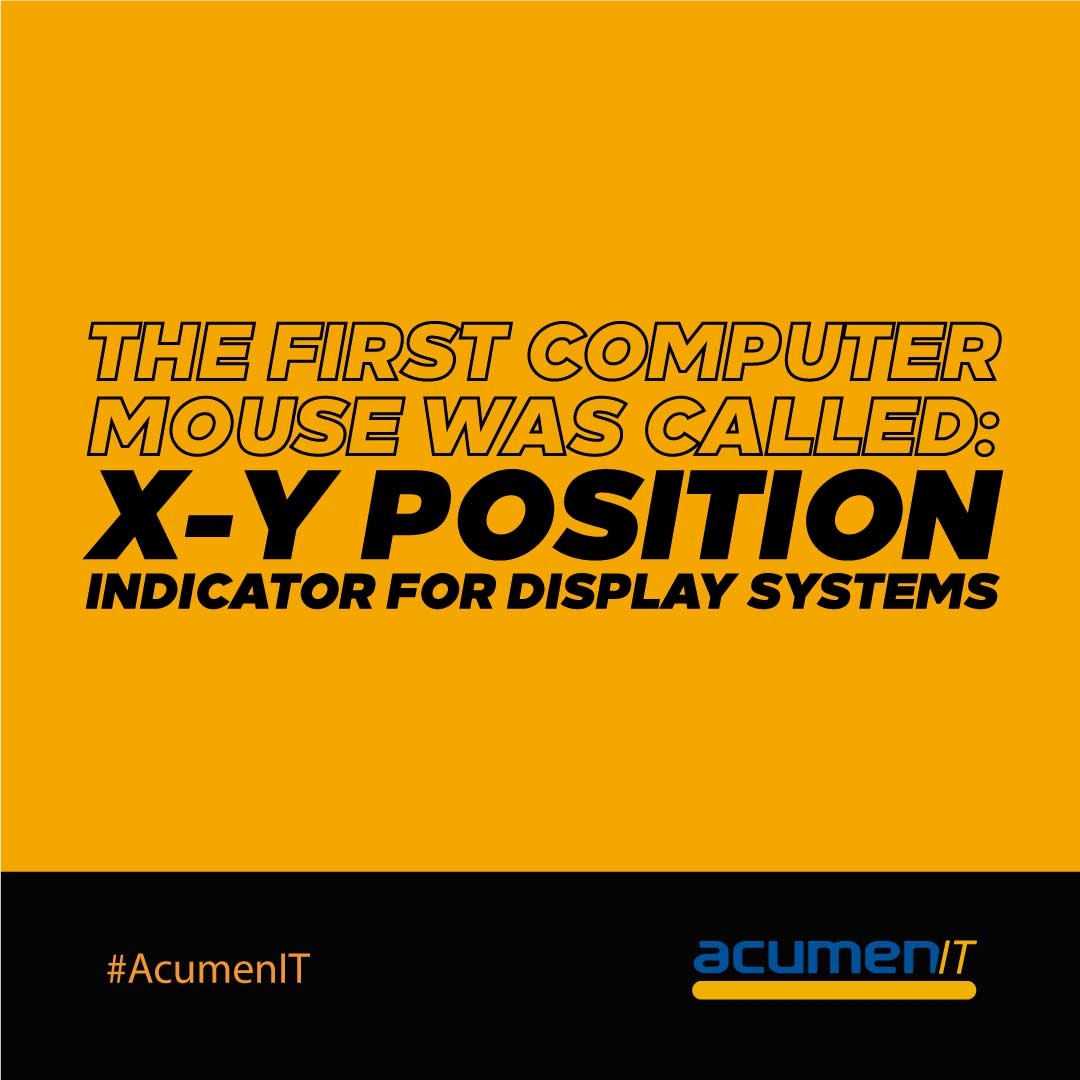

Please complete the following form if you need more information.
In the modern world of personal computers, the mouse is an indispensable tool. We rely on its clicks and scrolls for everything from navigating web pages to editing documents. But have you ever considered the origins of this ubiquitous device? The story behind the first computer mouse is a fascinating journey from a technical mouthful to the user-friendly nickname we know and love.
In the early 1960s, Douglas Engelbart, a visionary researcher at the Stanford Research Institute (SRI), was on a mission to revolutionize human-computer interaction. He envisioned a future where computers wouldn’t just be number-crunching machines, but dynamic tools for exploration and collaboration. A key element in his vision was a device that allowed for intuitive cursor control on a graphical display.
Engelbart’s team, fueled by extensive usability research, developed a prototype device in 1964. This early iteration, the brainchild of engineer Bill English, was a far cry from the sleek mice of today. Made of wood and considerably larger, it housed a single button and utilized a system of wheels to translate hand movements into on-screen cursor movement.
The official name for this groundbreaking invention? The rather technical “X-Y Position Indicator for Display Systems”. This name accurately reflected the device’s function – it tracked movement along the X and Y coordinates, translating it into cursor location on the display.

While the technical name was precise, it lacked a certain user-friendliness. According to some accounts, the nickname “mouse” arose organically within the SRI team. The device’s resemblance to a rodent, particularly the cord trailing behind like a tail (which originally emerged from the bottom!), is a popular explanation.
Another theory suggests the name was simply a playful moniker that stuck. Regardless of the exact origin, the “mouse” nickname resonated with its users. It was catchy, relatable, and far more approachable than the technical term.
The official patent filed in 1967 used the technical name, “X-Y Position Indicator for a Display System.” However, the “mouse” nickname persisted within the research community. In 1968, Engelbart’s now-famous “Mother of All Demos” showcased the capabilities of his NLS (oN-Line System) – a revolutionary system featuring the mouse as a core component. While the demo itself captured the imagination of the tech world, the “mouse” nickname likely gained wider exposure during this event.
The user-friendliness of the “mouse” moniker won out in the end. As computer technology became more accessible and graphical user interfaces (GUIs) emerged, the mouse became an essential tool. By the 1980s, the “mouse” nickname had firmly cemented itself in popular culture, solidifying its place in tech history.
The story of the first computer mouse is more than just a quirky naming anecdote. It highlights the importance of user-centered design and the power of nicknames. Engelbart’s invention, initially burdened by a technical name, ultimately thrived thanks to a more user-friendly moniker. This serves as a reminder that even the most groundbreaking technology needs to be accessible and intuitive to truly reach its potential.
Today, the computer mouse has evolved far beyond its humble beginnings. We have wireless mice, ergonomic mice, and even multi-function mice with an array of buttons and features. But the core functionality – the ability to navigate a graphical interface with ease – remains a testament to the vision of Douglas Engelbart and his team.
So, the next time you pick up your mouse, take a moment to appreciate its history. From its technical beginnings as the “X-Y Position Indicator” to its current status as a beloved computer companion, the mouse is a reminder of the ongoing quest to make technology more human-friendly.
Acumen IT Cybersecurity Services: Frequently Asked Questions
The original, technical name for the first computer mouse was the “X-Y Position Indicator for Display Systems.” This name accurately described its function of tracking hand movements and translating them into on-screen cursor location.
The exact origin of the “mouse” nickname is a bit fuzzy. Some believe it stemmed from the device’s resemblance to a rodent, with the cord resembling a tail. Another theory suggests it was simply a playful nickname used within the development team at SRI.
The “mouse” nickname resonated with users because it was catchy, memorable, and more user-friendly than the technical term. It made the device seem less intimidating and more approachable.
No, the official patent filed in 1967 used the technical term. However, the “mouse” nickname persisted within the research community and eventually gained wider recognition.
The user-friendliness of the “mouse” nickname likely played a role in the wider adoption of the device. A catchy and relatable name made the technology seem less complex and more accessible to everyday users.
We are located at 1 Distribution Ct. Greer, SC 29650, United States
ACUMEN IT
www.acumenit.com
info@acumenit.com
(864) 271-9000
IT Support | Managed IT Services Greenville
#ITSupport
EXCELLENT